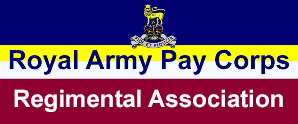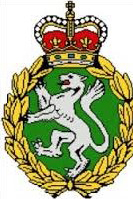WRAC RAPC


A Brief History of the Queen Mary's Army Auxiliary Corps, Auxiliary Territorial Service and Women's Royal Army Corps
In 1917 during the Great War women were recruited for service with the Army in a non-nursing capacity for the first time. The Women's Army Auxiliary Corps was formed, later becoming the Queen Mary's Army Auxiliary Corps (QMAAC) when Queen Mary became its Patron. Members of the QMAAC served with the British Expeditionary Force in France winning 3 Military Medals for gallantry. It was disbanded in 1921.
The Auxiliary Territorial Service (ATS) was formed on 9 September 1938 by order of George VI. More than 250,000 women, one of the most famous being the then Princess Elizabeth who was commissioned in March 1945, wore the uniform of the ATS during World War II. They served in most of the overseas theatres of operation as well as in the defence of the United Kingdom, particularly in Anti Aircraft Command. They also served as drivers, orderlies, store women and cooks. Seventy two were killed in action and 313 were wounded.
By the end of World War II it was acknowledged that women would be a valuable asset to a peacetime army. Women continued to serve on emergency engagements in the ATS whilst plans were formulated for a regular Women's Corps.
The Post War Years
In 1948 the Secretary of State, Mr Emmanuel Shinwell, made a formal submission to the Crown for permission to raise a Corps of Women for the Regular Army and Territorial Army. This received the Royal Assent on 1 February 1949 and the Women's Royal Army Corps (WRAC) came into being. For the first time women in the Army became subject to all sections of the Army Act. Dame Mary Tyrwhitt DBE TD was the first Director of the WRAC.
The WRAC was initially organised into battalions and companies, later into independent companies and platoons, and gradually became integrated with their employing military units. The Corps Charter stated that it was 'to provide replacements for officers and men in such employment as may be specified by the Army Council from time to time'. Women served in over 40 different trades in 20 different Arms and Corps.
Her Majesty Queen Elizabeth The Queen Mother, who had been Commandant in Chief ATS since 1940, became Commandant in Chief WRAC in 1949.
Her Royal Highness Princess Mary, The Princess Royal, who had been Controller Commandant ATS, became Controller Commandant WRAC in the honorary rank of Major General. Following the death of The Princess Royal in 1965, Her Royal Highness The Duchess of Kent became Controller Commandant in the rank of Honorary Major General in 1967.
In March 1950 Field Marshal Sir William Slim GBE KCB DSO MC announced that female officers would use the same tiles as male officers. Previously, they had been known as Subaltern, Junior Commander, Senior Commander, Controller.
Trouble Spots World Wide
Since World War II members of the WRAC have played a full part in many of the operations, emergencies, security threats and incidents involving the British Army worldwide such as: Malaya 1948 - 1960, Kenya in 1954, the EOKA campaign in Cyprus from 1955 - 1959, the Singapore riots in 1957, Aden from 1961 - 1968, the Coup d'Etat in Ghana in 1966 and the Turkish invasion of Cyprus in 1974. More recently WRAC officers and soldiers have been involved in:
Northern Ireland: Troops were deployed to Northern Ireland during the troubles in 1969 to assist the civilian police to maintain order and continued to serve in theatre until the WRAC disbanded in 1992.
The Falklands Islands: A permanent garrison was re-established in 1982 after the victory in the Falkland Islands. On 1 August 1983 the first draft of 20 WRAC servicewomen arrived in Port Stanley. They traveled by air to Ascension Island and then by sea to the Falkland Islands.
The Gulf 1990-1991: Operation GRANBY was the British Army's contribution to Operation DESERT SHIELD and Operation DESERT STORM, the multi-national response to the Iraqi invasion and occupation of Kuwait. Officers and servicewomen of the WRAC were employed on Operation GRANBY as members of the Staff of Commanders or as individuals with their units. They worked as staff officers, assistant adjutants, clerks, chefs, communications operators, drivers, intelligence analysts, medical assistants, military police women, and postal and courier operators. In all over 200 members of the WRAC served in Saudi Arabia and Kuwait during Operation GRANBY.
Iraq 1991: Operation HAVEN's mission was to provide security and humanitarian support in the move of Kurdish people from refugee camps directly back to their homes. One officer and 3 servicewomen of the WRAC, attached to 29 Commando Regiment Royal Artillery, took part in Operation HAVEN in Northern Iraq.
Disbandment of the Corps
The Army Board decided that WRAC officers permanently employed with other Corps should be transferred to those Corps on 1 October 1990. The servicewomen also employed by those Corps followed one year later.
In December 1990 the Army Board announced the formation of the Adjutant General's Corps. This Corps formed up on 6 April 1992 through the amalgamation of the Royal Military Police, Royal Army Pay Corps, the Royal Army Education Corps, Royal Army Ordnance Corps Staff Clerks and the remainder of the WRAC.
The WRAC spirit lives on in the WRAC Association through its national and international branch network. The proud legacy of successes and achievements over 90 years, together with the history and traditions of women in the Army, is carried forward to the Army of today.
"Suaviter in modo, fortiter in re"
WRAC Collect
O Merciful God and Father of us all, whose will it is that we should help one another, give to us, the members of the Women’s Royal Army Corps Association, grace that we may fulfil the same. Make us gentle, courteous and forbearing. Direct our lives so that we may have courage and resolution in the performance of our duties and hallow all our comradeship by the blessing of Thy spirit. For His sake who loved us and gave Himself for us, Jesus Christ our Lord. Amen.
The above article is copyright the
WRAC Association
You may also be interested in: